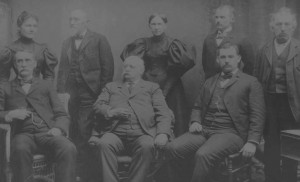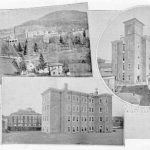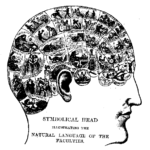Asylum superintendents went to great lengths to present their institutions as surrogate homes for patients. They spoke of the nice rooms, pleasant activities, pretty landscaping, and structured schedules that would restore disordered minds. Superintendents saw themselves as father figures, head of a large “family” of patients and attendants who worked together cheerfully and obediently. Reality was generally a far cry from such visions, but there was at least some substance to this “family” view.
Superintendents and staff lived at the asylum, often ate meals with patients, and joined in their recreational activities. Like most families of the period, patients and attendants in insane asylums began their day early. After bathing and breakfast, they made beds and swept hallways, cleaned rooms, washed dishes, and performed all the various chores necessary to keep the family fed, clothed, cleaned, and rested.
Just like parents, doctors and attendants had little time to themselves. The needs of their patients could be overwhelming, and both worked long hours–12 to 16 hours a day. Attendants spent the most time with patients, burdened with the relentless tasks associated with caring for helpless, uncooperative, or physically ill adults. When they were on the grounds, they were on call to help patients, day or night. For most of the 19th century, attendants received a half day off a month, a couple of evenings off a week, and an entire Sunday off once a month or so.
______________________________________________________________________________________








